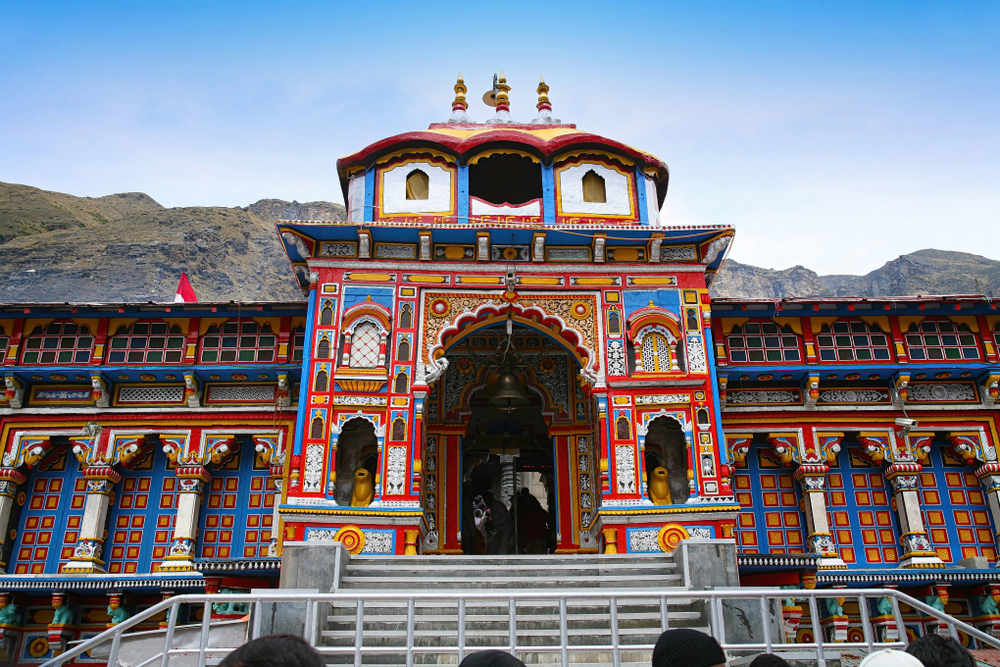
$260$380/
Per Person
Delhi – Haridwar – Barkot – Yamunotri – Uttarkashi – Gangotri – Guptkashi – Kedarnath – Badrinath – Rudraprayag – Rishikesh
Categoría de los hoteles:
- 1. Económicos.
- 2. Heritages.
- 3. Lujos.
Itinerario
Llegada al aeropuerto de Delhi / estación de tren de Delhi, recibimiento y asistencia para continuar hasta Haridwar. Traslado al hotel. Si el tiempo lo permite, visite el templo Mansadevi, el templo Chandidevi, los templos Daksha Mahadev y otros. Visite también Har-ki-Pauri para el Ganga Aarti. El culto "Aarti" al Ganges después del atardecer y la "dia" (lámpara) flotante es un ritual conmovedor. Regreso al hotel. Parada nocturna. Haridwar, a los pies de las colinas de Shiva, es decir, Shivaliks, en el distrito de Haridwar de Uttaranchal Pradesh, es una puerta. El príncipe suryavanshi Bhagirath realizó aquí penitencia para salvar las almas de sus antepasados que habían perecido debido a la maldición del sabio Kapila. La penitencia fue respondida y el río Ganges brotó de las melenas del Señor Shiva y su abundante agua revivió a los sesenta mil hijos del rey Sagara. En la tradición de Bhagirath, los hindúes devotos se paran en las aguas sagradas de este lugar y rezan por la salvación de sus mayores difuntos. Es la puerta de entrada a las fuentes del Ganges y el Yamuna, a entre 3000 y 4500 metros de altura, en las cordilleras nevadas del Himalaya central. Har ki Pauri: también se lo conoce como Brahmakund y se cree que es el lugar donde el néctar divino cayó del cántaro. Es el sitio donde se celebra la famosa Kumbh Mela cada 12 años. Un gran número de devotos viene especialmente a Haridwar para darse un baño sagrado en el río Ganges. Al anochecer, cuando se realiza el aarti vespertino, el reflejo de las diyas doradas que siguen flotando en el río ofrece a los visitantes una vista encantadora del ghat. Este ghat sagrado fue construido por el rey Vikramaditya en memoria de su hermano Bhatrihari, de quien se dice que meditó en las orillas del Ganges en Haridwar. Templo de Chandi Devi: situado en la cima del Neel Parvat, el templo de Chandi fue construido en 1929 por Suchat Singh, el rey de Cachemira. Se puede llegar al templo después de una caminata de 3 km desde Chandi Ghat. Se dice que la estatua principal del templo de Chandi Devi fue erigida por Adi Shankaracharya en el siglo VIII. También se ha instalado un teleférico hasta el templo de Chandi Devi. Templo de Mansa Devi: el templo de Mansa Devi se encuentra en la cima del Bilwa Parwat y está dedicado a la diosa Mansa Devi. Se puede llegar a Mansa Devi en un teleférico que lleva a los peregrinos al templo o a pie. Una estatua de la diosa tiene tres bocas y cinco brazos, mientras que la otra tiene ocho brazos. El templo ofrece una vista aérea de Haridwar. Templo de Daksha Mahadev: este antiguo templo de Daksha Mahadev (templo de Daksheswara Mahadev) está ubicado en el sur de Kankhal y su deidad residente es el Señor Shiva. Según la mitología, se supone que este templo fue el lugar de un yagna dirigido por Daksha.
EspañolConduzca hasta Barkot vía Mussoorie, de camino visite Kempty Fall (es recomendable almorzar en Kempty Fall ya que no hay buenos restaurantes disponibles antes de Badkot). Más tarde conduzca directamente a Barkot, traslado a su hotel. El resto del día es libre para relajarse y almacenar energía para el Pahad (hiII) Yatra de Yamunotri del día siguiente. Pasaremos la noche en Barkot. Barkot es conocido por su belleza natural escénica. Está ubicado en la confluencia de los ríos Yamuna y Tons. A una altitud de más de 4000 pies, huertos de manzanos rodeados por la cordillera del Himalaya. Barkot ofrece vistas panorámicas de las montañas cubiertas de nieve de Bandar Poonch. Barkot es una parada importante en el camino a Yamunotri y Gangotri, entre las cuatro peregrinaciones de Char Dham. Clima: Generalmente agradable en verano, la temperatura varía entre 25 y 30 grados centígrados. Invierno: Los días son agradablemente frescos pero las noches son frías, la temperatura varía entre 10 y 05 grados.
Early morning, Drive to Jankichatti/Phoolchatti, trek start from here to Yamunotri (6kms). Either by walk or by horse or by Doli at own cost. The trek passes through lush green valley, a profusion of conifers, rhododendrons, cacti and several species of Himalayan shrubs. Arr. Yamunotri, One can cook rice by packing it in a cloth and dipping it in the hot water of the hot kund. Pilgrims take this cooked rice home as ``Prasad``. Here near the temple ``Pooja`` can be offered to Divya Shila, After taking bath in Jamunabai Kund's warn water and having ``Darshan`` of pious ``Yamunaji`` returning to Jankichatti. Return back to Barkot, Overnight stay. Yamunotri, the western most shrine of the Char Dhams, is dominated by Banderpunch (6,361 m). Yamunotri is the source of the river Yamuna, the twin sister of Varna, the Lord of Death. Yamuna is also the daughter of Surya the Sun. The actual source of the river originates from Champasar Glacier 1 km a head of the shrine, at an altitude of 4,321 mts. Yamunotri Temple: Maharani Gularia of Jaipur built the temple in the 19th Century. It was destroyed twice in the present century and rebuilt again. Surya Kund: There are a Number of thermal springs in the vicinity of the temple, which flows into numerous pools. The most important of these is Surya Kund. Divya Shila: A rock pillar, worshipped before entering the Yamunotri Temple. Weather - In summer the maximun temp is 18 degrees and the minimum is 10 degrees celsius. The days are pleasantly cool but the nights are cold.
Drive to Uttarkashi. Visit Vishwanath Temple & Others. Check in Hotel. Rest day at leisure. Night Halt. Uttarkashi is home to a number of ashrams and temples and also to the Nehru Institute of Mountaineering. The name of the town reflects its similarity to and location (as north of) the city of Kashi (Varanasi). Similar to Varanasi, town of Uttarkashi is situated on the Ganges, lies next to a hill named Varun Parvat, on confluence of two rivers Varuna and Asi, has a ghat called Manikarnika Ghat and has a temple dedicated to Shiva (Kashi Vishwanath) in the center of the town. Vishwanath temple - Vishwanath temple is one of the oldest Shiva temples in Northern India. Re-constructed in 1857 by Maharani Khaneti Devi of Tehri State in the ancient architectural style. It is situated at the heart of the town. A massive iron trident, symbolic of divine mother’s, is erected and worshiped from time immemorial at the temple complex. Ganeshji, Sakshi Gopal, Markandeya Rishi’s small shrines are also part of the temple complex. Akhand Jyoti as well as Akhand Abhishek, special aarti at morning and evening are offered. As per Skunda Puran, Uttarkashi is known as ‘Saumya Varanasi’, the abode of Lord Shiva in Kaliyug and counted as one of the twelve Jyotirlingas. Shakti temple - Right in front of the Vishwanath temple is Shakti temple. It has a big ‘Trishul’ of about 6 meters in height and a circumference of 90 cms. at bottom. Though there are different views about the making of this, the upper part of it seems to be made up of iron and the lower one is of copper. As per the epics this Shakti was thrown on the devils by the Goddess Durga(Shakti), hence it gets its name. Since then this Shakti is erected over here Weather - Generally hot in summer, the temperature ranges from 30-35 degree Celsius but nights is pleasant, Cold in winters.
Early morning drive to Gangotri, enroute at Gangnani take a holy dip in Garam Kund, further drive to Gangotri via beautiful Harsil Valley. Harsil is famous for its nature beauty and for the majestic views of the Deodar trees, and mountains. On arrival at Shree Gangotri, take a holy dip in the sacred river Ganges which is also called Bhagirathi at its origin. Perform Pooja and Darshan, after that relax for some time in the lovely surroundings. Return back to Uttarkashi. Overnight stay at Uttarkashi. Gangotri Temple: The temple, constructed by the Gorkha General Amar Singh Thapa in the 18th Century, is situated on the right bank of Bhagirathi. Submerged Shivling: Submerged in the river, this natural rock Shivling is the place where, according to mythology Lord Shiva sat when he received the Ganga in his matted lock. It is visible in winter months when water level decreases. Kedar Ganga Sangam: Around 100 Yards from the Ganga Temple flows the river Kedar Ganga. Starting from the Kedar Valle, this river meets the Bhagirathi on its left bank.
Drive straight to Guptkashi via Moolgarh & Lambgoan. Enroute you can see the beautiful river Mandakini at Tilwara. The Mandakini river comes from Kedarnath, drive alongside the river to reach Guptakashi. On arrival Check In at the Hotel, evening visit Ardh Narishwar Temple. Overnight stay at the Hotel. The name Gupt Kashi means ``Hidden Benares. Mythology describes how when the Pandava brothers were searching for a glimpse of Shiva, Shivji first concealed himself at Gupt Kashi, but later fled from them further up the valley to Kedarnath, where the Pandavas finally got their wish fulfilled. There are more tangible connections as well-the Kedarnath pandas (hereditary pilgrimage priests) live in Gupt Kashi during the winter months, and after the Kedarnath temple closes for the winter, the image of Kedarnath passes through Gupt Kashi on its way to Ukhimath (across the valley), where it stays for the winter. Weather - Generally pleasant in summer, the temperature ranges from 25-30 degree Celsius. Cold in winters.
Morning drive to Phata (Helipad), transfer to Kedarnath by Helicopter. Visit Kedarnath Temple, Everyone can go inside Garbha Griha and touch the idol. You can also prostrate with your head touching the deity etc. Return back to Phata. Later drive back to Guptkashi. Rest day at leisure. Overnight stay. Kedarnath: The Kedarnath shrine, one of the 12 jyotirlingas of Lord Shiva, is a scenic spot situated, against the backdrop of the majestic Kedarnath range. Kedar is another name of Lord Shiva, the protector and the destroyer. According to legend, the Pandavas after having won over the Kaurava in the Kurukshetra war, felt guilty of having killed their own brothers and sought the blessings of Lord Shiva for redemption. He eluded them repeatedly and while fleeing took refuge at Kedarnath in the form of a bull. On being followed he dived into the ground, leaving his hump on the surface. The r! emaining portions of Lord Shiva appeared at four other places and are worshipped there as his manifestations. The arms appeared at Tungnath, the face at Rudranath, the belly at Madhmaheshwar and his locks (hair) with head at Kalpeshwar. Kedarnath and the four above-mentioned shrines are treated as Panch Kedar.
Drive to Badrinath via Joshimath. Check in Hotel. Later at evening visit Badrinath Temple for Aarti. Overnight stay. Badrinath one of the 'Four Dhams' is one of the most celebrated pilgrimage spots of the country and is situated at an elevation of 3,133 meters, guarded on either side by the two mountain ranges known as Nar & Narayan with the towering Neelkanth Peak providing a splendid backdrop. This revered spot was once carpeted with wild berries. Thus the place got the name ``Badri van``, meaning ``forest of berries``. Tapt Kund : Natural thermal springs on the bank of the river Alaknanda, where it is customary to bathe before entering the Badrinath temple. Narad Kund : A recess in the river, near Tapt Kund, forming a pool from where the Badrinath idol was recovered. Brahama Kapal : A flat platform on the bank of river Alaknanda. Hindus perform proppitiating rites for their deceased ancestors. Sheshnetra : 1.5kms. away is a boulder having an impression of the legendary serpent, better known as the Sheshnag's eye. Charanpaduka : 3kms. away is a beautiful meadow where the footprint of Lord Vishnu is seen on a boulder. Mata Murty Temple : Devoted to the mother of Sri Badrinathji. Other important temples include Sesh Netra Temple, Urvashi Temple and Charanpaduka. Mana Village : Inhabited by an Indo-Mongolian tribe, it is the last Indian village before Tibet. Vasundhara : As the name suggests, vasundhara is a magnificent water fall. This place is 5 kms. from Badrinath out of which 2 kms. is motorable upto Mana. Bhim Pul : On the other side of Mana village, a massive rock forming a natural bridge, lies over the roaring Saraswati river. It presents a spectacular view of water thundering down through the narrow passage under the rock and is believed to have been placed there by Bhim, the second eldest among the five Pandava brothers. Vyas Gufa (cave) : Near Mana Village, this is a rock-cave where Ved Vyas is believed to have composed the Mahabharata and the pauranic commentaries.
Temprano por la mañana, los peregrinos, después de bañarse en el Taptkund, tienen el Darshan de Badrivishal. Brahamakapal es importante para Pinddan Shraddh de los antepasados (Pitrus). Hay otros lugares turísticos interesantes como Mana, Vyas Gufa, Maatamoorti, Charanpaduka, Bhimkund y el ``Mukh`` del río Saraswati. A solo tres kilómetros de Badrinathjee. Más tarde, regreso a Rudraprayag / Kirtinagar vía Joshimath. Registro en el hotel. Alojamiento. Joshimath está situado en las laderas sobre la confluencia de los ríos Alaknanda y Dhauliganga. De los cuatro 'Maths' establecidos por Adi Shankaracharya, Joshimath es la sede de invierno de Badrinath. El ídolo se lleva a Joshimath y se instala en el templo para que la gente lo adore. Hay muchos otros templos en el municipio. El más importante es el templo de Nir Singh con el ídolo del Señor Vishnu. El brazo izquierdo de esta deidad se está destruyendo con el tiempo y la creencia popular sostiene que el día en que el brazo se marchite por completo, el valle de Badrinath dejará de existir y los dioses trasladarán la residencia al vecino valle de Niti en Bhavishya Badri.
EspañolConducción a Rishikesh, el "lugar de los sabios", es una ciudad espiritual célebre en la orilla del Ganges y está rodeada por la cordillera Shivalik del Himalaya en tres lados. Se dice que cuando Raibhya Rishi hizo penitencias duras, Dios apareció con el nombre de "Hrishikesh" y esta área de ahí pasó a ser conocida como Rishikesh. Registro en el hotel. Más tarde, visita a los templos de Rishikesh y visitas turísticas: Laxman Jhulla, Ram Jhulla, Triveni Ghat, Bharat Mandir, Shivananda Ashram. Por la tarde, visita a Ganga Aarti en Parmarth Ashram. Alojamiento. Bharat Mandir: El Bharat Mandir es el templo más antiguo de Rishikesh, situado cerca de Jhanda Chowk. Rishi Rabhya hizo su penitencia en este lugar sagrado y el lugar está dedicado al Señor Vishnu. Un espectacular Shree Yanthra sagrado está ubicado en el dosel interior del templo. Bharat Mandir celebra el colorido festival de primavera llamado 'Basant Panchami'. Laxman Jhula: Lakshman Jhula es una de las principales atracciones de Rishikesh. Es un puente colgante de 450 pies de largo sobre el río Ganges que fue construido en 1939. Según los mitos y leyendas, Laksman, hermano del Señor Rama cruzó el río Ganges con una cuerda de yute desde este punto. El templo de 13 pisos está ubicado cerca de Lakshman Jhula, donde se guardan los ídolos de varios dioses y diosas. El puente ofrece una vista magnífica del Ganges, y lo saluda con la brisa fresca del río. Ram Jhula: Ram Jhoola conecta Swargashram con Shivananda Ashram. Varios ashrams se encuentran cerca de Ram Jhoola. Ram Jhoola es más grande que Laxman Jhula y aún más pintoresco.
Regreso a Delhi. Llegada a Delhi y traslado a la estación de tren o al aeropuerto. Fin del tour.

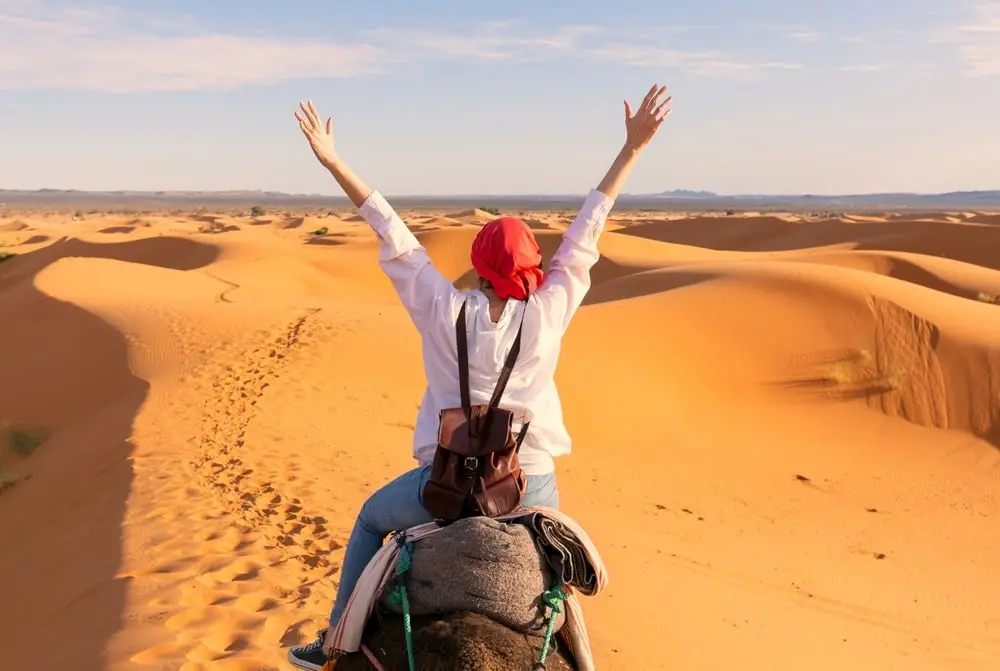
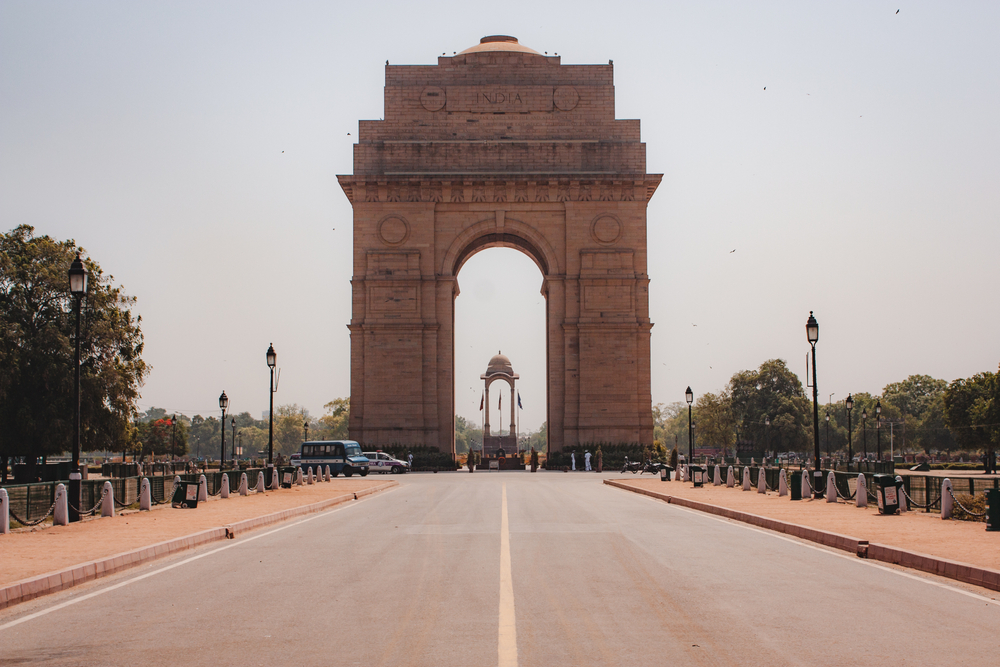
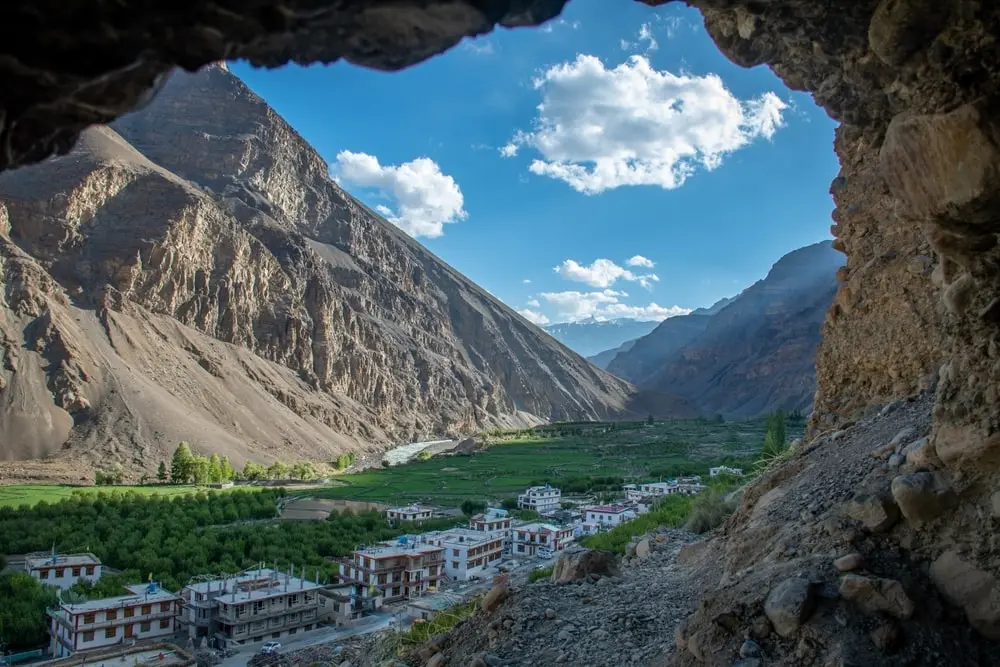
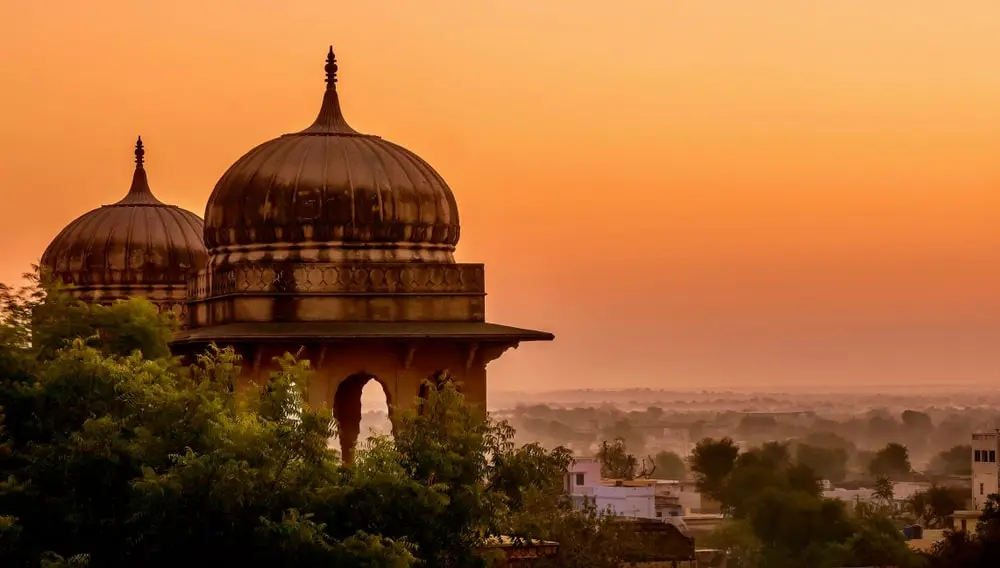




Comments (2)
💽 🔷 Incoming Deposit - 0.25 BTC from unknown sender. Accept? > https://graph.org/Get-your-BTC-09-11?hs=179cae89d9ca3dbc85d39dc8287e9809& 💽,
10 October, 2025lsy4zf
Your code of destiny,
04 April, 2025I am really inspired with your writing abilities and also with the layout on your weblog. Is this a paid subject matter or did you modify it your self? Either way keep up the excellent high quality writing, it’s rare to peer a great weblog like this one these days!